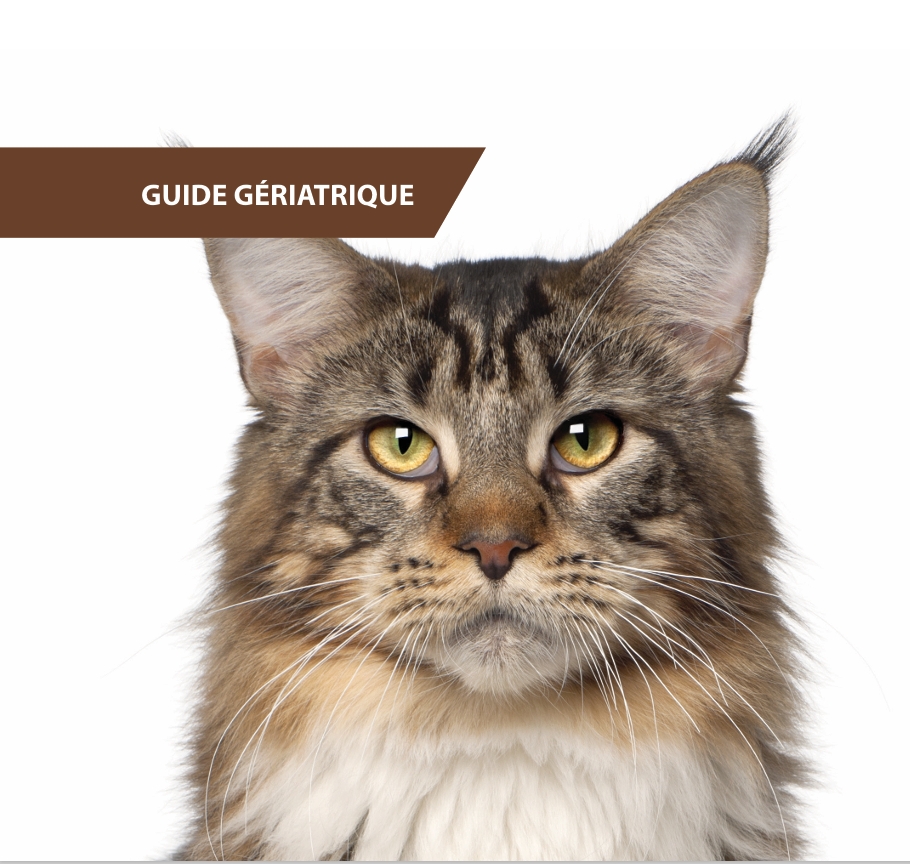This geriatric guide for cats was created by the MonVet Veterinary Group team to help you better understand how your cat ages and how to recognize early signs of age-related disease. As cats now live longer than ever, they are more likely to develop chronic conditions such as kidney disease, arthritis, dental problems, hypertension or cognitive decline. This guide explains, in clear and simple terms, what is considered normal aging and what should prompt you to book an appointment.
Inside, you will find an overview of how a complete geriatric check-up works: physical examination, bloodwork, urinalysis and targeted screening tests. We explain why these tests are recommended, what they can reveal and how often they should be done for a senior cat. You will also learn to spot subtle changes at home, such as increased thirst, changes in appetite or weight, altered grooming, bad breath, changes in mobility, vocalization, sleep or behaviour.
The guide then offers practical tips to improve your senior cat’s comfort and quality of life: how to adapt their diet, make food, water and litter boxes easier to access, help a cat with arthritis move around the house, and provide gentle physical and mental stimulation. We also outline the main options available for pain management and supportive care, including medications and complementary therapies your veterinarian may suggest.
Finally, a practical checklist of common geriatric symptoms helps you prepare for your veterinary visit and communicate your observations clearly. This guide is not a substitute for a consultation, but a companion resource to help you work as a team with your MonVet veterinary clinic so that your senior cat can enjoy the longest, happiest and most comfortable life possible by your side. Keep it handy and refer back to it regularly as your cat grows older and their needs change over time.














